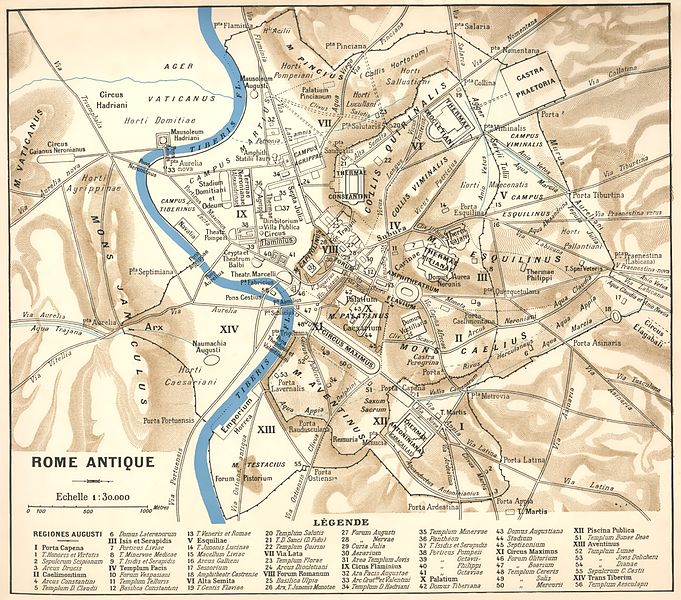Ancient Rome was located on the left bank of the Tiber, about 22.5 km from its mouth, and near the northern border of Lazio, adjacent to Etruria. The village was home in Platinum, with many a hill between about 30 to 45 m high towering nearby river.
This settlement was the place known as Roma Quadrata, the fortified city that was supposed second was built by Romulus. The city grew initially to include the region known as the Septimontium (the seven "hills" were the three elevations of the Palatine, the Esquiline and the three Celian), along with pomoerium (sacred enclosure) around it. The area has added this to turn a sibling existing village in the hills ahead - the Quirinal and Viminal. Within the limits of this city stood together the Forum, or market square, and the Capitol, the central fortress.
The city, at the stage that ended within the Servian walls (ie, the wall whose construction was attributed to Serbian Tulio), consisted of the seven hills of Rome (which should be distinguished from the seven "hills" mentioned above), ie, the Palatine, the Aventine, the Capitoline, the Celian, the Esquiline, the Quirinal and Viminal. This was the city in the republican era, though at the end of this period the houses have already reached out beyond the walls (a law of Julius Caesar ordered a distance of 1.6 km out of doors residents should avoid building houses on the route the road).
The city grew even more during the Imperial era, and ultimately Aurelian (270-275) ordered to encircle it with a wall that included not only a more extensive area in the left margin, but also a part of the margin Janiculum right of the Tiber.
The city center was extremely tight and congested, Julius Caesar has improved her communications with the northern part (Campus Martius) through the creation of Forum Julium, and Augustus gave continuation of these works with the Forum Augustum.
The works were completed with the construction of large Trajanum Forum by order of Emperor Trajan. The streets of Rome, at least until the subsequent reconstruction of the fire occurred at the time of Nero, were narrow and crowded for passersby, to the point of a law passed by Caesar prohibit traffic vehicles in the city during the day. There was the wall of a building located in the northern part of the Via Sacra a map of the city of marble, fragments of which still remain, it is assumed that his execution date at the time of Septimius Severus and Caracalla, and that this plant might be a copy of an older one, the time of Vespasian.


0 comments:
Post a Comment